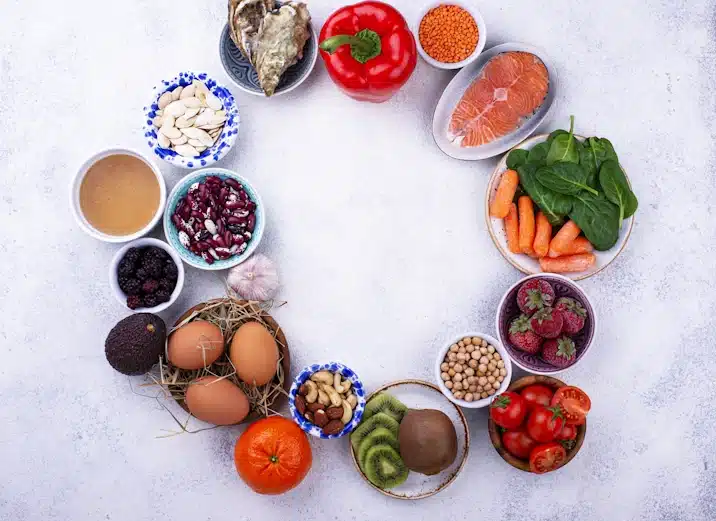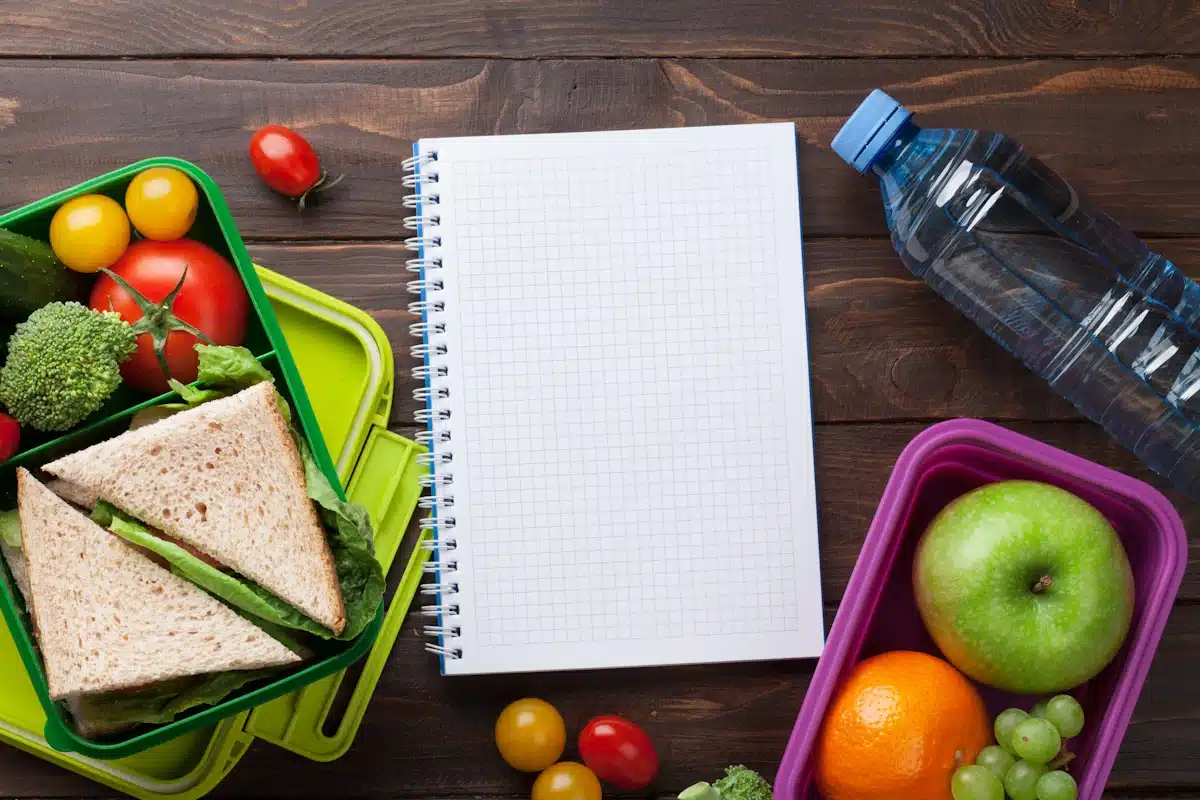
You’re not just a parent; you’re a superhero tasked with creating nutritious, appealing lunches for your little ones. It’s not always easy. With their finicky tastes and your busy schedule, it’s like navigating a culinary minefield. But don’t worry. Together, we’ll explore the art of crafting balanced meals, tackling picky eating habits, and ensuring lunchbox safety. Welcome to your guide to mastering the art of ‘Lunch for Young Children.
Make lunchtime fun & nutritious for your little ones! 🥪✨ Find easy meal ideas, handle picky eaters, and ensure a safe, healthy lunchbox every time. Get tips to involve your kids & avoid packing mistakes.
Children’s lunches should balance proteins, carbohydrates, fats, vitamins, and minerals for optimal growth.
Meal planning should involve a variety of foods within each food group to ensure nutrient diversity and cater to dietary restrictions.
Picky eating is a typical phase, and strategies such as creative food presentation and involving children in meal preparation can help encourage them to try new foods.
Lunchboxes should be kept clean, and foods should be packed separately to maintain hygiene and prevent foodborne illnesses.
Packing school lunches can sometimes feel daunting, especially when you want to ensure your kids are eating healthy and nutritious meals. With so many options available, it can be overwhelming to decide what to pack. However, packing school lunches can be a breeze with little planning and creativity. In this article, we will provide you with some fun and easy cold lunch ideas, tips on how to get your kids involved, and common mistakes to avoid when packing school lunches. Whether you’re looking for a new twist on the classic cheese sandwich or innovative ways to use cream cheese, we’ve got you covered. Let’s dive in and make lunchtime a fun and nutritious adventure!
Why don’t you know that understanding your child’s nutritional needs is crucial for their growth and development? Well, it’s not always as simple as it seems. Nutrition Education plays a vital role in deciphering the complexities of children’s dietary requirements. It’s not just about knowing what foods to give your child, but more importantly, why and how those foods contribute to their wellbeing.
Starting with the basics, children need a balance of proteins, carbohydrates, fats, vitamins, and minerals for optimal growth. Each nutrient has a specific role, and skipping any can lead to imbalances, affecting their Growth Monitoring. For instance, proteins are essential for building tissues, while carbs and fats provide energy. Vitamins and minerals, though needed in smaller amounts, are just as critical for various bodily functions.
But it’s not just about what they eat; it’s also about when and how they eat. Regular meals and healthy snacks prevent overeating and ensure they get all the necessary nutrients. Understanding all these aspects of your child’s nutrition can seem overwhelming, but don’t worry. You’re part of a supportive community here and not alone. The following section will explore preparing balanced meals to make this journey more manageable.

Transitioning into preparing balanced meals, you’ll find that it’s not as daunting as it may initially seem. It’s all about adopting effective Meal Planning Strategies and having Dietary Restrictions Awareness. Let’s dive in.
Firstly, planning is crucial. Write down the meals for each day of the week; include proteins, grains, fruits, vegetables, and dairy. Remember, variety is key. Switch up the foods within each group to ensure your child gets a range of nutrients. Consider pasta salad as a versatile and appealing option for children.
Next, be aware of dietary restrictions. If your child is allergic to certain foods, find substitutes that provide similar nutrients. For instance, if lactose intolerant, use almond or soy milk instead of cow’s milk. Pita bread is a healthy and versatile component for creating quick and nutritious meals.
Lastly, involve your child in the process. Let them help in the kitchen or choose what fruit they’d like for lunch. This teaches them about nutrition and makes them feel like they belong in the meal-planning process.
Many parents grapple with the challenge of picky eaters, but there are several strategies you can employ to help your child broaden their food preferences. First, remember that it’s natural for children to be fussy eaters. It’s a phase many go through, not a reflection of your parenting. You’re not alone in this journey; seeking advice and sharing experiences is okay.
One effective strategy is to be creative with food presentation. For example, you can use colourful vegetables to make a rainbow on their plate or shape food into exciting characters. Making mealtime fun can spark their interest in trying new foods.
Lunchtime fun for your kiddos! 🍱✨ Easy, healthy lunch ideas to make them smile, plus tips for picky eaters and lunchbox magic! 🥪👶 Get your little ones involved and make lunch an adventure!
Another method is to involve your child in the meal preparation process. When they participate in cooking, they’re more likely to eat what they’ve helped make. This also gives them a sense of accomplishment and belonging, which boosts their confidence.
Patience and consistency are key. Don’t give up if they refuse a food the first time. Keep offering it in different ways, and eventually, they might grow to like it.
These tips prepare you to tackle picky eating habits. Now, let’s move on to creative lunch ideas for kids, where we’ll explore more ways to make mealtimes exciting.
So, how can you make your child’s lunchtime more exciting and nutritious? Let’s dive into ‘Fun Sandwiches’ and ‘Edible Art.’
First, try jazzing up the everyday sandwich. Use cookie cutters to create fun shapes, like stars, hearts, or animals. Layer different types of bread for a colour twist that’s visually appealing and adds variety. Fill your fun sandwiches with lean proteins, fresh vegetables, and a spread of hummus or avocado for a nutrient-packed meal. Consider adding chicken nuggets as a kid-friendly option that can be paired with dips like honey mustard.
Next, transform fruits and veggies into edible art. You’d be surprised how much more appealing a cucumber becomes when it’s a part of a landscape or a carrot when it’s a sun in the sky. Use a variety of colourful produce to create scenes on a plate. It’s not just fun; it’s a clever way to introduce new foods to your child. Cold lunches are also an easy and nutritious option for school.
Hot lunches can be a comforting addition to your child’s meal routine, especially during the school year. Favourite warm meal options include soups, pasta, and rice dishes. To keep these meals warm, consider using insulated lunch boxes or thermoses. This ensures that your child enjoys a hot, satisfying meal even hours after it’s been packed.

Getting your kids involved in packing their lunches can be a fantastic way to teach them about healthy eating and independence. Here are a few ways to get your kids involved:
Let them help with meal planning: Ask your kids to help you plan their lunches for the week. This can help them feel more invested in their meals and more likely to eat what they’ve packed. Plus, it’s an excellent opportunity to discuss the importance of balanced nutrition.
Let them help with grocery shopping: Take your kids with you to the grocery store and let them help you pick out fruits, vegetables, and other healthy snacks. This will make them feel included and educate them about making healthy choices.
Let them help with packing: Let your kids help you pack their lunches by placing items in their lunch box or bag. This hands-on involvement can make them more excited about their lunches and more likely to eat everything they’ve packed.
Involving your kids in the lunch-packing process will teach them valuable life skills and make lunchtime a more enjoyable experience for everyone.

Planning your young children’s school lunches can help ensure they eat healthy and nutritious meals. Here are a few tips for preparing school lunches:
Plan: Take some time on the weekend or one day a week to plan your child’s lunches for the next few days. This can save you time and stress during busy mornings.
Shop smart: When grocery shopping, try to buy items that can be used in multiple meals, such as shredded cheese or cooked pasta. This will save you money and make putting together balanced and varied lunches easier.
With some planning and preparation, you can ensure your child’s school lunches are nutritious and delicious.
After you’ve put together a fun and nutritious meal, ensuring the young children’s lunchbox is safe and hygienically packed is equally important. Sanitizing containers isn’t a task to skip; it’s crucial to keeping your child’s lunch safe. So, make it a habit to clean lunchboxes and containers with hot, soapy water after every use, and let them dry properly. This prevents the growth of bacteria, which can lead to foodborne illnesses.
Next, focus on avoiding cross-contamination. This means keeping foods separate to prevent the spread of harmful bacteria from one food to another. For instance, if you’re packing a sandwich and some fruit, pack them in separate compartments or containers. This not only keeps your child’s lunchbox tidy, but it also plays a significant role in maintaining food safety.
Here are a few common mistakes to avoid when packing young children’s school lunches:
Not using an ice pack: If you’re packing perishable items like sandwiches or yogurt, include an ice pack to keep them cool and safe to eat. This is crucial for maintaining food safety and preventing spoilage.
Not including a variety of foods: Try to include a variety of foods in your child’s lunch, such as fruits, vegetables, whole grains, and lean proteins. A balanced lunch provides essential nutrients and keeps your child interested in their meals.
By avoiding these common mistakes, you can ensure your child’s school lunches are safe, nutritious, and enjoyable.
So, you’ve got this! Understanding your child’s nutritional needs, preparing balanced meals, tackling picky eating habits, and ensuring lunchbox safety isn’t rocket science. With a pinch of creativity and a sprinkle of patience, you can whip up a lunch your little ones will adore. Remember, their tiny tummies need fuel to grow and learn. Please don’t fret; we’re doing this together, transforming lunchtime into a fun, nutritious adventure!

Te camaraderie you’ll experience during shared meals with work colleagues can have

Looking for tasty vegetarian keto lunch ideas? We’ve compiled 17 delicious recipes

Transform your kitchen prep game with the best vegetable peelers of the

Making time for lunch with close friend in our busy world? We’ve

For those adapting to the increasing teleworking trend, the lunch break takes on a new dimension. Here, the challenge is not about escaping the office environment but enhancing the home setting to create a refreshing break from work.
The Lunch Pro addresses these needs by offering creative ideas for time-efficient and satisfying home meal preparations, ensuring that teleworkers can effectively detach from their work roles, even briefly.